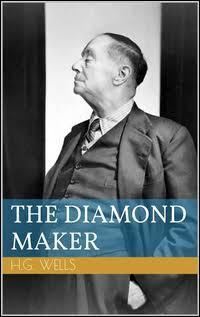6.8 /10 1 Votes6.8
Published in Pall Mall Budget Publication date 16 August 1894 Country United Kingdom | 3.4/5 Goodreads Media type Print Originally published 16 August 1894 Genre Science Fiction | |||||||||||||||||||||||||||||||||
 | ||||||||||||||||||||||||||||||||||
Similar H G Wells books, Classical Studies books | ||||||||||||||||||||||||||||||||||
"The Diamond Maker" is a short story by H. G. Wells, first published in 1894 in the Pall Mall Budget. It was included in The Stolen Bacillus and Other Incidents, the first collection of short stories by Wells, first published in 1895.
Contents
- The diamond maker by h g wells book reading british english female voice
- Historical background
- Story
- References
In the story, a businessman hears an account from a man who has devoted years attempting to make artificial diamonds, only to end as a desperate outcast.
The diamond maker by h g wells book reading british english female voice
Historical background
It was known since experiments of Antoine Lavoisier that diamond was a form of carbon.
Wells's story appeared a few years after the claims of James Ballantyne Hannay in 1879 and Ferdinand Frédéric Henri Moissan in 1893, that they had made artificial diamonds. Moissan heated charcoal (a form of carbon) and iron in a furnace until the iron melted; then rapidly cooled, the iron would generate high pressure and transform the charcoal into diamonds. Others tried to repeat this experiment in later years, and very small diamonds were created; commercially successful production of synthetic diamonds was not achieved until the 1950s.
Story
The narrator is getting relief from his business life by gazing at the river from the Thames Embankment, when someone who looks like a tramp starts a conversation with him. Despite his appearance he talks like an educated businessman. He has a bag of what look like uncut diamonds. One, which is as big as the tip of a thumb, he offers to sell for a hundred pounds, but the narrator is suspicious.
The man tells him that he has spent years on a project to make diamonds. It was done secretly, so that others would not copy his work, and so that he could sell his diamonds without it being known that they could be produced in large quantities. After his money ran out he conducted his experiments in cheap lodgings in Kentish Town, and had various menial jobs. Using an idea suggested by experiments of Gabriel Auguste Daubrée, he put the mixture which might produce diamonds together with dynamite in a cylinder too strong to burst, and he finally succeeded; but as he looked at the results a neighbour in the lodgings house, thinking he was a bomb-making anarchist, told him he had called the police. He abandoned the lodgings house, taking with him his diamonds; this left him in the state in which the narrator has found him: homeless and carrying diamonds which he cannot try to sell without causing suspicion.
The narrator thinks the man's story might be genuine, and gives him his business card, but although he had some communication with him for a period, he does not see the man again. Reflecting later on the encounter, he wonders if the man is dead, or will perhaps re-emerge and become famous; he wonders if he missed a business opportunity.
